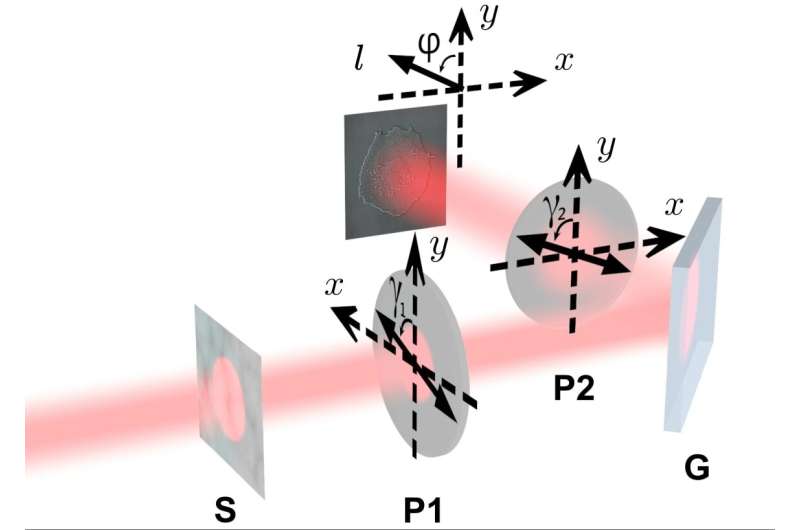Seeing the invisible: Polarizer adjustments increase visibility of transparent objects

In biological microscopy and X-ray imaging, many transparent objects or structures are difficult to observe. Due to their low absorption of light, the usual intensity measurements don't work. Instead, the structural information is mainly conveyed by the different phase changes of light as it propagates through different parts of an object.
Zernike invented phase contrast microscopy to render transparent objects visible, receiving the Nobel prize in Physics in 1953. Later, to further enhance the contrast, a method known as differential interference contrast imaging was developed to quantitatively transfer the phase changes into intensities, providing information about the optical path experienced by light when propagating through an object—its optical thickness. Methods based on interference setups or nanostructure devices have also been demonstrated. However, current methods rely on complex configurations, resulting in difficulties of optical alignment and adjustment.
Optical computation of spatial differentiation: beyond edge detection
A solution to these difficulties may be found in optical computation of spatial differentiation for electric fields of incident light, considering light as an electromagnetic wave. So far, the application has been limited to edge detection where it can improve the contrast of edges of transparent objects. However, it has not resolved the difficulty of quantitative phase distribution recovery. Recently, a team of researchers led by Zhichao Ruan at Zhejiang University has developed an adjustable spatial differentiation to characterize and quantitatively recover the phase distribution.
Ruan's group demonstrates that a simple scheme—adjusting the polarizers—can optically compute the spatial differentiation of the incident light field along different directions. They also improved contrast by tuning a uniform constant background as a bias, creating a virtual light source that casts a shadow on the measured images. Based on this bias approach, they can distinguish the phase increases and decreases in light field distribution and quantify the optical thickness of observed objects with a high degree of accuracy (within 0.05λ).
The method is simple, flexible, and much cheaper than current methods. It circumvents the fabrication of complex structures, as well as difficulties of optical alignment and adjustment. Perhaps most importantly, the proposed method is independent of light wavelength and may open new avenues to quantify phase in X-ray or electron microscopy imaging.
More information: Tengfeng Zhu et al. Optical phase mining by adjustable spatial differentiator, Advanced Photonics (2020). DOI: 10.1117/1.AP.2.1.016001
Provided by SPIE





















